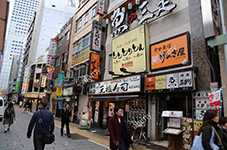On October 5, after years of exhausting–and exhaustive–haggling, a dozen Pacific Rim countries finally signed up to the Trans-Pacific Partnership, an agreement that promises everything from more trade to a cleaner environment. The negotiations were such that the hair of Akira Amari, Japan’s economic and fiscal policy minister, turned completely grey. His solace, however, is that the TPP will prove to be a key foundation stone of the “Asian Century.”
The TPP’s origins, pre-dating Amari’s involvement, go back to a 2006 trade agreement among only Singapore, New Zealand, Chile, and Brunei–the so-called “Pacific 4.” The United States, Australia, Peru, and Vietnam, seeing the prospect of a rules-based international order in Asia, joined the talks in March 2010, and in an instant the P-4’s small boat became a great ocean liner, Yuriko Koike wrote for Project Syndicate.
And then it became a convoy, as Malaysia, Mexico, Canada, and finally–in 2013–Japan joined the negotiations. Combined, the TPP economies account for some 40% of world GDP, outstripping the largest existing free-trade area, the European Union. Once the TPP enters into effect, its impact on the global economy will undoubtedly be monumental–even without the participation of China, which on a purchasing-power-parity basis is now the world’s biggest economy.
China Priorities
China’s exclusion was no accident. Its huge and complex economy would have injected insuperable problems into the talks. In response, China has launched its “Silk Road” initiative to create an economic zone that will favor its own priorities. It is also seeking greater trade cooperation with European countries. One example is President Xi Jinping’s recent visit to the United Kingdom–which in essence is also an attempt to weaken Britain’s “special relationship” with the US by creating a cat’s cradle of trade, financial, and investment ties with Britain. It is worth noting that Xi had already lured the UK into supporting–against American advice–the new, China-led Asian Infrastructure Investment Bank.
But, as Japanese Prime Minister Shinzo Abe’s recent call for talks with China on the issue confirm, the TPP is not off-limits to China–or to other Asian economies. South Korea is warming to the idea of the TPP, as is Indonesia, following President Joko Widodo’s recent visit to Washington, DC.
For Japan, the TPP is vital to achieve economic liberalization–the third arrow of “Abenomics,” the government’s program to revitalize the country’s ailing economy.
Weighing Risks
The promise of greater exchange of goods, services, and capital across the Pacific, as well as the creation of international standards (for example, for intellectual-property rights), is simply too appealing to ignore. When Japan and other Asian countries weigh the risk of implementing the TPP against the risk of not participating, the risk of not participating is overwhelmingly higher.
Japan’s political challenge will be to sell the TPP to its voters, especially the farm lobby. The customs duty on beef imports, for example, is currently 38.5%. It will be 27.5% in the first year after the TPP takes effect, and will then be gradually lowered to 9% in the agreement’s 16th year.
That should surely provide more than enough time for Japanese beef ranchers to prepare themselves for foreign competition (of the 870,000 tons of beef imported annually, 520,000 tons come from Australia, the US, and New Zealand). And it will certainly be a boon for consumers, as the price of their beef-noodle soup and sukiyaki falls dramatically.
The same applies to rice. Taking advantage of the worldwide sushi boom, Japan needs to emphasize that “real sushi requires Japanese rice,” branding it an exclusive product.
But now comes the truly hard part. The TPP has been signed–but it will not be implemented unless and until it is ratified by the legislatures of countries such as the US and Canada. That process could well be enough to turn Amari’s gray hair white.


